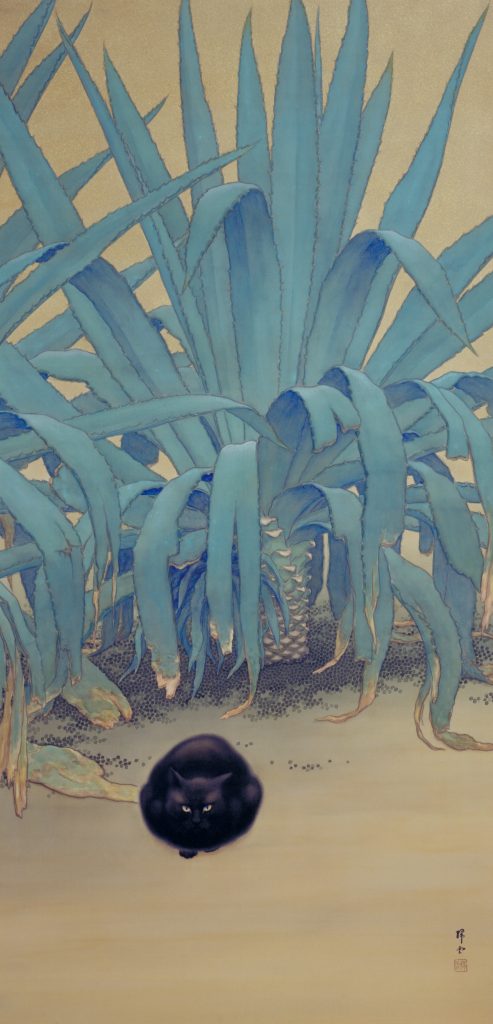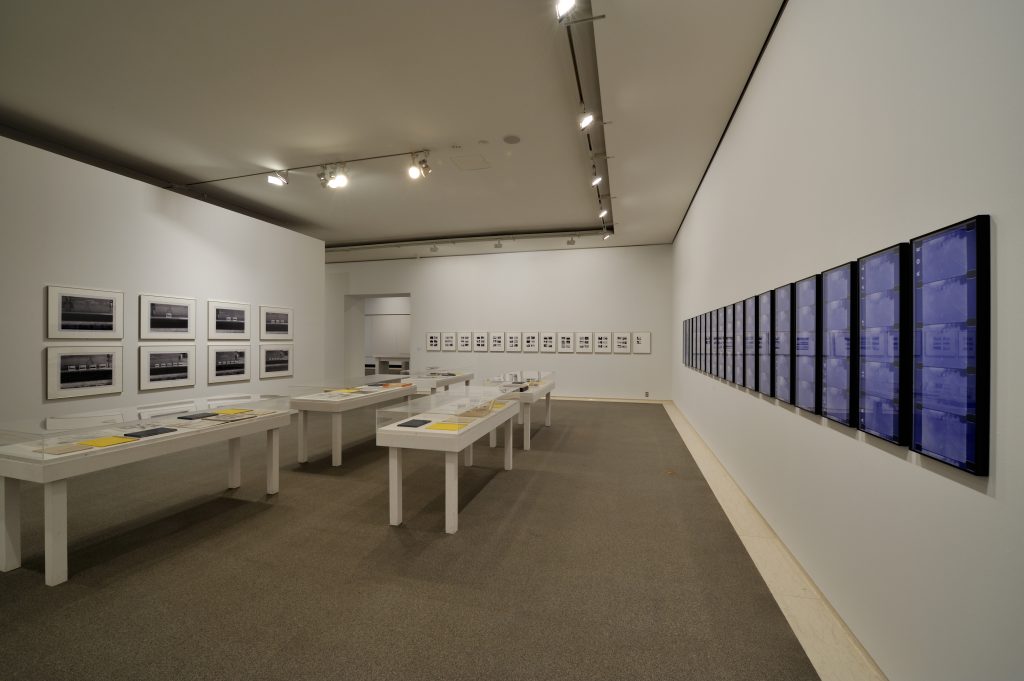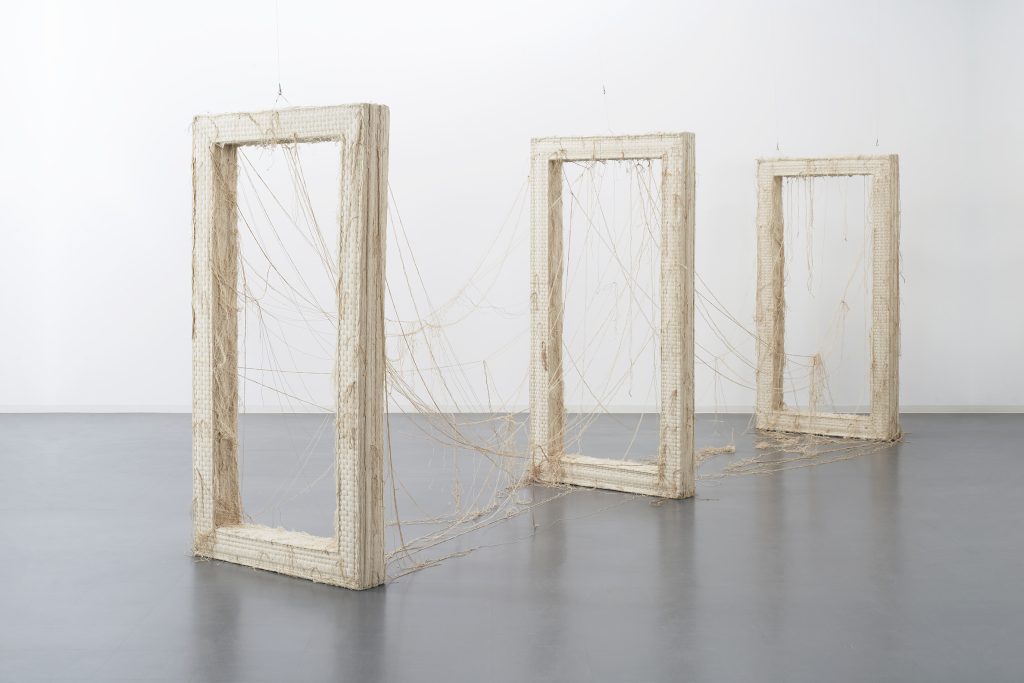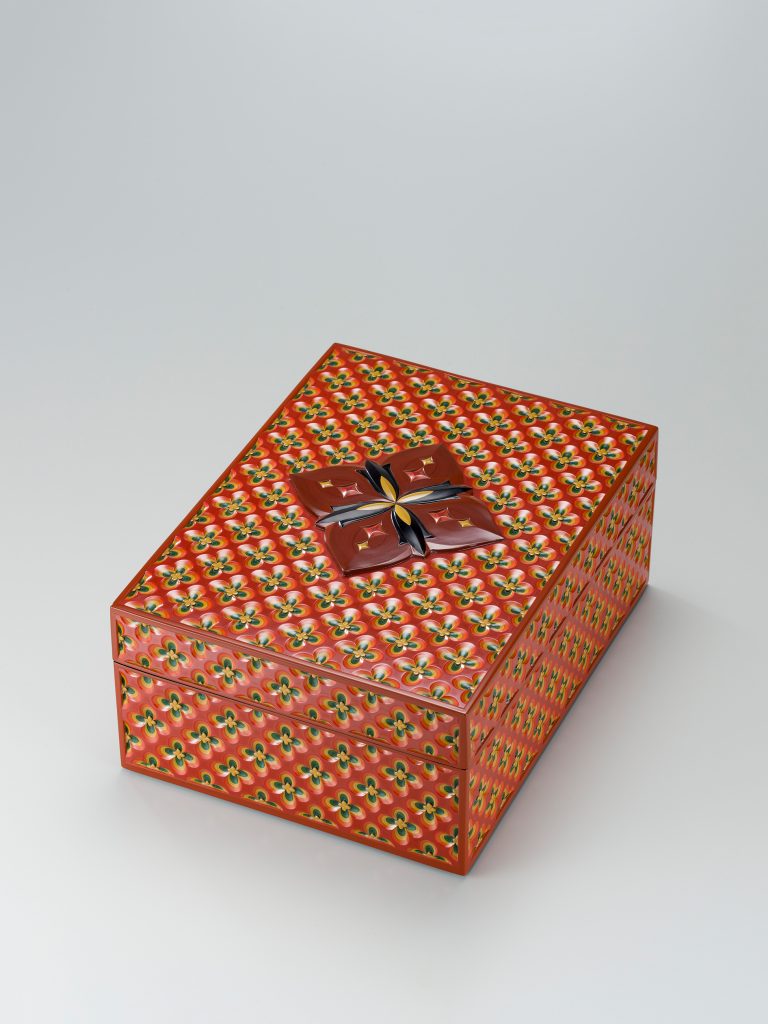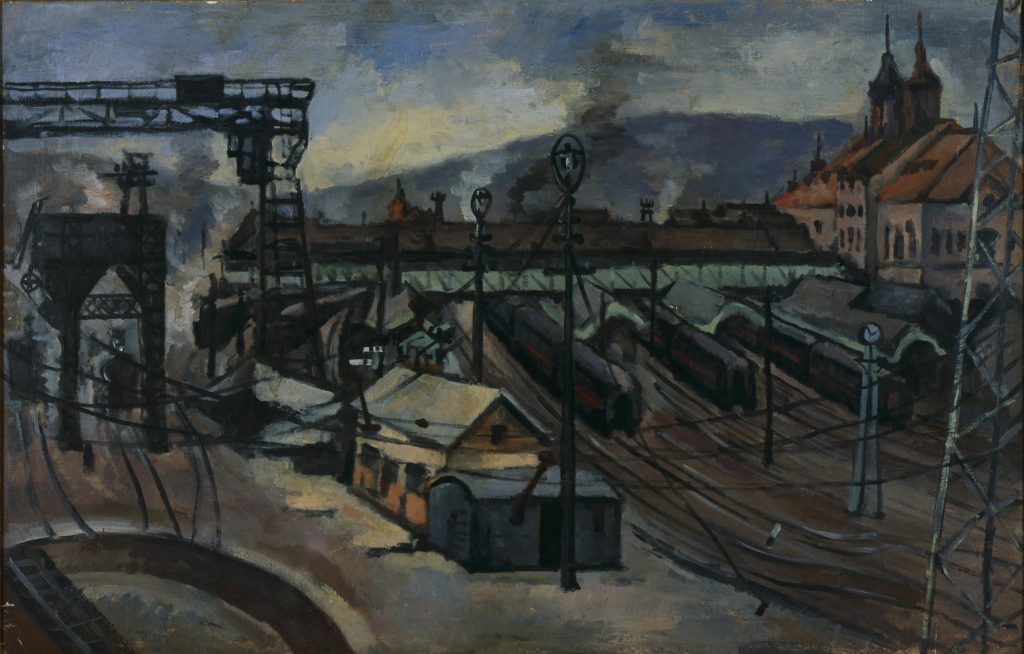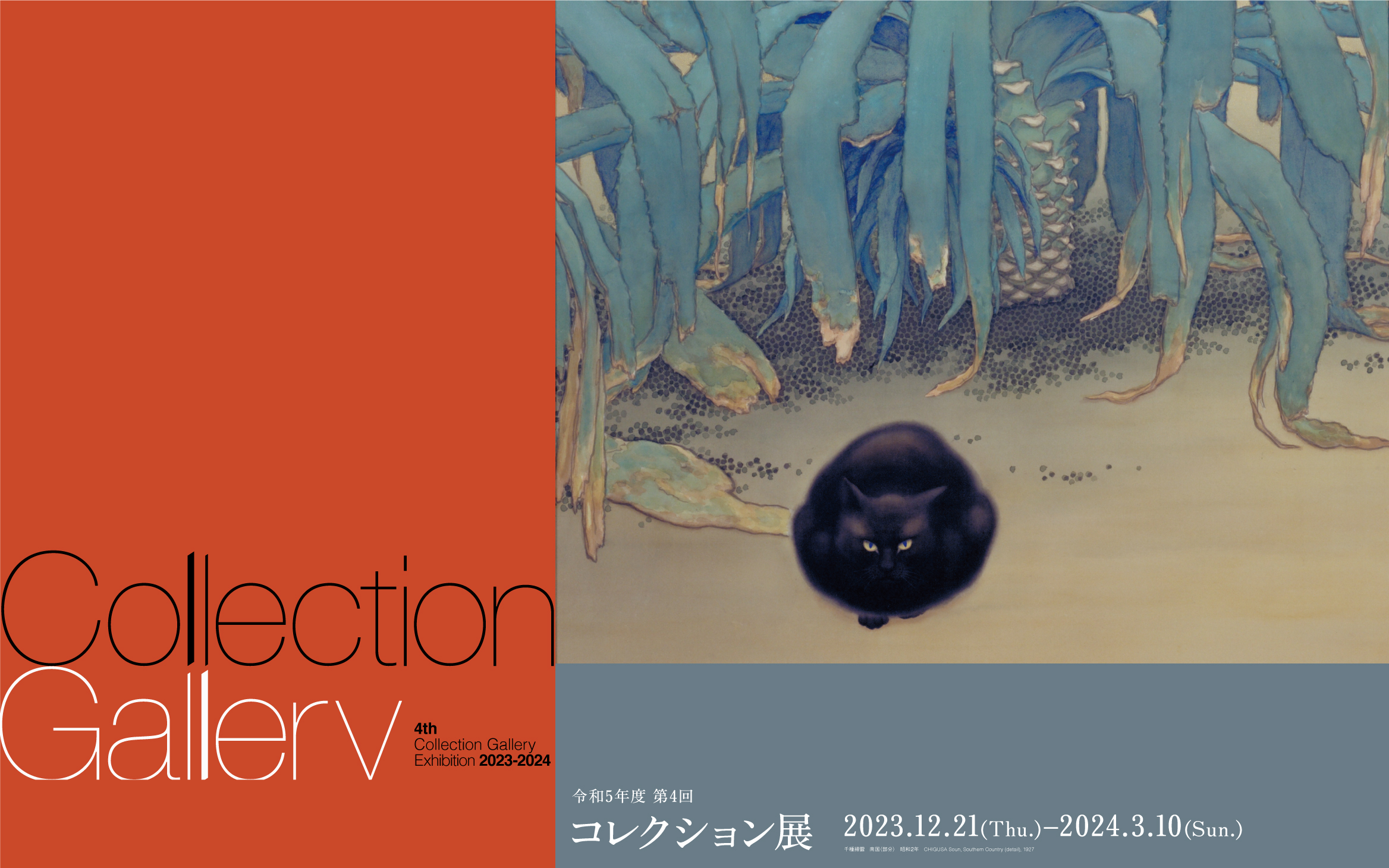
Collection Gallery
4th Collection Gallery Exhibition 2023–2024
2023.12.21 thu. - 03.10 sun.
Chigusa Soun: The 150th Anniversary of His Birth and the 80th Anniversary of His Death CHIGUSA Soun, Southern Country, 1927
In 2023 we commemorate the 150th anniversary of the birth of Chigusa Soun (1873-1944), and in 2024 we will mark the 80th anniversary of his death. Chigusa Soun studied Nihonga (Japanese-style painting) under Takeuchi Seiho and Western-style painting under Asai Chu. He is known for his excellent painting skills and pioneering activities, preceding even the subsequent Kyoto art scene leader Tsuchida Bakusen in depicting the nude figures of female ama skin-divers. However, today Chigusa Soun is a relatively lesser-known painter, and we would like to mark this occasion by introducing this artist who made a lasting impact on the Kyoto art scene through works and archival materials from our collection.
Chigusa Soun was born in 1873 into a well-to-do Kyoto family and was named Akio. However, the family’s fortunes declined in the aftermath of the Meiji Restoration, and at the age of 15, Akio began working as a live-in gatekeeper at the mayor’s residence in Kobe, where the mayor discerned his artistic talent. After becoming a pupil of Ibaragi Suigaku, who was involved in producing artworks for export in Kobe, Akio joined the studio of Takeuchi Seiho to study art more intensively. Studious and diligent by nature, Soun’s interests extended beyond Nihonga, and to learn Western-style painting, he obtained Seiho’s permission to enroll in Asai Chu’s Shogoin Western Painting Institute, where he devoted himself to figure drawing. Around this time many other Nihonga painters were also learning Western techniques, and Soun studied oil painting alongside artists like Kamisaka Shoto, Ogawa Sen’yo, and Shiba Senshu and also took part in formation of the Heigogakai group, which aimed to pioneer new approaches to Nihonga. Soun’s trailblazing subjects and style, as seen in Woman Divers (first term), which portrays the robust strength of working women, and A Tedious Day (second term) depicting a woman in a melancholic mood, paved the way for succeeding generations of artists and helped foster a creative environment in which Nihonga evolved.
Soun is primarily known for painting working people and natural landscapes, but when he was in his forties he also made Chigusa Tadaaki, a historical figure famed as a loyal retainer of Emperor Go-Daigo, one of his subjects. This thematic shift was inspired by independent research, begun after he visited Chigusa Village and Chigusa Castle in Ise City, during which he became convinced that he was a direct descendant of Tadaaki. From then on, he dedicated much effort to commemorating the achievements of this loyal retainer. In his younger years, Soun had studied classical painting techniques on his own, and this enabled him to produce works such as Portrait of General Chigusa Tadaaki with Conferment in a traditional style. He also showed his artistic versatility through various activities including production of botanical illustrations.
*Due to a faulty display case, some works that were scheduled to be exhibited in this section of the 4th Collection Gallery Exhibition 2023–2024 (second term) have been cancelled. Thank you for your understanding.
In Memoriam: Nomura Hitoshi, 1945-2023 NOMURA Hitoshi, A Special Room for "HEARING", 1970-76
In memory of Nomura Hitoshi, who died on October 3, 2023, we present a special exhibit of the contemporary artist’s works drawn from the museum collection.
Born in Hyogo Prefecture in 1945, Nomura enrolled in Kyoto City University of the Arts in 1963. There, he studied sculpture with artists such as Horiuchi Masakazu and Tsuji Shindo. As his final work in the non-degree program, Nomura created Tardiology, a huge cardboard structure that collapsed under its own weight. This inspired him to document times and spaces that were altered by natural phenomena, signaling the importance of photography as an expressive medium in his subsequent works.
Nomura took part in Trends in Contemporary Art, an exhibition held at the National Museum of Modern Art, Kyoto in 1970. For this event, Nomura called the museum from a number of public phones along the roads leading from his house to the museum, and with the help of a museum curator, created a work made up of audio recordings and Polaroids, which depicted the scenes he found in each spot. This piece, later titled Telephone Eyeshot, was also included in an ambitious 1976 work called A Special Room for “HEARING,” in which Nomura created an archive by documenting and assembling information on various events through the use of what, at the time, were new media such as records, films, and photocopies. The work also expressed the relationship between the artist’s physicality and recording media – a primary concern of art in the 1970s.
In about 1975, Nomura began to observe the movements of the sun and the moon from a fixed point, discover order and laws hidden within natural phenomena, and use his unique sensibility to visualize them in photographic works such as ‘moon’ score, The Sun on Lat. 35°N, and The Analemma. Another photographic work, based on the orbit of Halley’s Comet, which passed Earth in 1986, was displayed in Images in Transition: Photographic Representation in the Eighties, an exhibition held at the museum in 1990.
Nomura once said that the careful observation of nature makes various things apparent. This is borne out by an episode, well known among the students of Kyoto City University of the Arts (where Nomura taught), in which the artist took a fixed-point photograph of the sun at noon every day using a camera set up on campus. He subsequently expanded this interest to include the order of the universe and ancient terrestrial phenomena, and set out to express ideas about multiple occurrences in the cosmos with transparent glass.
In 1993, Nomura formed the Solar Power Lab (SPL) with a group of students and graduates of Kyoto City University of the Arts, developing works that incorporated science and technology, including a self-built solar-powered car that was used to cross the North American continent.
In this exhibition, we reexamine the trajectory of Nomura Hitoshi’s creative practice in which he consistently explored the time and order contained in everyday things and the universe with his unflagging powers of observation and fertile imagination.
The Structure of Thread YOSHIMURA Masao, Frame Cloth A. B. C, 1985
"Fiber, a material derived from nature, becomes yarn when thread after thread is placed on a loom. The yarn in turn becomes a cloth when each individual piece of yarn is assembled and organized. But even after the threads become a cloth, each one retains its original nature."
This statement by Yoshimura Masao, dates from around the time of his first exhibition, which included the work Frame Cloth. When we looking at this collection of tightly stitched cloths, we notice the loose ends of countless threads. As the art critic Nakahara Yusuke pointed out, Yoshimura’s works are moving from cloth to thread, displaying a process that is the reverse of weaving. The works are visual manifestations of going from thread to fabric and vice versa, while also raising questions around the boundary between these two states. Although Frame Cloth is reminiscent of a wall, it does little more than enclose the space as a frame. Yoshimura conceived the cloth as a plane, but he also wondered what the definition of cloth was.
Peter Collingwood, one of the most prominent British weavers, commented that although his works have an extremely simple appearance, they are actually the product of complex engineering. Collingwood is known for a unique technique called “macrogauze,” in which he interweaves and twists the warp thread using a manually powered loom. Rather than being restricted by the precision of the loom, the artist relishes the designs that emerge as a result of it. To Collingwood, another distinctive feature of weaving is its ability to repeatedly produce the same structure.
In Michael Brennand-Wood’s mesh series, the artist explores the possibilities of the grid by replacing the warp and weft, the fundamental structure of weaving, with a collage on a wooden frame. The threads in the space, imbued with depth by the frame, waver back and forth freely, and as we follow the threads with our eyes, we also waver back and forth between the parts and the whole, and order and chaos. Brennand-Wood cites music, including minimal music and graphic notation, as a strong influence. In one work, named after Marianne Faithfull’s 1979 song “Broken English,” snippets of text are eloquently scattered across a mostly white foundation to create a palpable rhythm.
In this display, we examine artistic expressions centering on single threads in conjunction with the Kobayashi Masakazu and His Contemporaries exhibition.
The Joys of Materials TAKAHASHI Seido, Casket with Flower Design, Choshitsu Technique, 1936
In the production of crafts, selection of materials and application of skills acquired through intensive training play a significant role in determining the qualities of the completed work. Of course creative motivation, the reason why one creates a particular object, is important, but the practicalities of how one creates something are also essential for artisans to bring their works to fruition. For example, Kawamoto Goro, a prominent ceramicist who was recognized as a leading figure when the museum first opened and whose work was frequently exhibited, succinctly described his creative process: “I use various types of clay in accordance their nature, shaping and firing them to extract and express the beauty hidden within to the greatest possible extent. I believe that this is the primal source of beauty in pottery.” This mentality can also be observed in the works of Bizen potter Fujiwara Kei and Tokoname potter Esaki Issei. Meanwhile, glass artists such as Iwata Hisatoshi and Masuda Yoshinori have established entirely different styles within the same craft, utilizing transformations and degrees of transparency achieved through melting and molding with heat.
Suzuki Mutsumi, known for creations employing the kyushitsu technique fundamental to lacquerware, and Takahashi Seido, who applies multiple layers of lacquer in the tsuishitsu technique, create works that showcase lacquer’s inherent properties as a coating. Meanwhile, metalworkers such as Nagano Tetsushi and Takamura Toyochika manifest the distinctive textures and material properties of iron and copper using casting techniques that involve melting metal and pouring it into molds. Wood artist Nakagawa Kiyotsugu combines pieces of Jindai cedar and deploys the straight grains of the wood to create precise and geometric worlds, while Iizuka Shokansai harnesses the innate flexibility and resilience of bamboo to create elaborate and graceful pieces that structurally integrate shapes and patterns.
KAWABATA Yanosuke:The 130th Anniversary of the Artist's Birth KAWABATA Yanosuke, Kyoto Station, 1929
This year marks the 130th anniversary of the birth of Kawabata Yanosuke (1893-1981), an oil painter active in Kyoto. Born into a merchant family on Nishiki-dori, Yanaginobanba in Kyoto’s Nakagyo Ward, Yanosuke grew up quite near other future oil painters such as Yasui Sotaro, Suda Kunitaro, and Tsuda Seifu. While Yanosuke was fond of painting from a young age, he did not pursue initially an art career as he intended to succeed the family business, and went to study at Keio University in Tokyo. However, interactions with Tsuda Seifu in Tokyo deepened his interest in painting, and after graduating in 1919, he enrolled at the Kansai Bijutsuin in Kyoto. There he studied under Sawabe Seigoro, a pupil of Asai Chu, thanks to a connection via his brother-in-law Hasegawa Yoshio, who was also Asai Chu’s student.
Yanosuke studied in Paris for over two years, from October 1922 to February 1925. This was a time of numerous Japanese painters in Paris, Foujita Tsuguharu being perhaps the best known. In Paris, Yanosuke received help and guidance from Kuroda Jutaro, who had been ahead of him at Kansai Bijutsuin, and studied at the studio of Charles Guérin with other Japanese artists including Sakamoto Hanjiro and Shimotori Yukihiko. He also became close friends with Suda Kunitaro, who was studying in Spain, through frequent visits. In March 1924 he and Satomi Katsuzo visited Maurice de Vlaminck shortly before Saeki Yuzo did the same. After returning to Japan, Yanosuke did not go abroad again but continued painting in Kyoto. He regularly exhibited works at the Shunyo-kai exhibition and the Kyoto Shiten (Kyoto City Art Exhibition, later renamed the Kyoto Municipal Art Exhibition [Kyoten]), and taught at Kyoto City University of Arts and Kyoto Saga Art College.
Here, in addition to works by Kawabata Yanosuke from the museum’s collection, we are also pleased to present those by his closest friends Suda Kunitaro and Kuroda Jutaro, his brother-in-law Hasegawa Yoshio, his teacher Sawabe Seigoro, and fellow Sawabe pupil Shimotori Yukihiko.
“Dear MoMAK”: Let’s Celebrate the 60th Anniversary of the National Museum of Modern Art, Kyoto
This year, the National Museum of Modern Art, Kyoto (MoMAK) celebrates the 60th of its opening. What sorts of stories have emerged from relationships between visitors and the museum over the past six decades? Taking a look back at the history of MoMAK, we are currently asking people to share their memories of past exhibitions and events, as well as anecdotes related to memorable artworks and artists. Every day we have been receiving responses such as “I recall being overwhelmed by the power of the work,” “I felt close to the history [of the work] because it was made the same year that my grandfather was born,” or “I’ll never forget the dessert inspired by the art that I enjoyed at the museum restaurant.”
In a section of the permanent collection galleries, people’s written memories that connect to works and artists in our collection, selected by museum staff, are presented alongside the works themselves. We hope that as you enjoy your time at the museum, you will contemplate the many bonds that form between individual visitors and works of art.
“Dear MoMAK” welcomes everyone to participate, as many times as they like. On the occasion of our 60th anniversary, why not put down your own special memories on paper?
Exhibition Period
2023.12.21 thu. - 2024.3.10 sun.
[First term]
2023.12.21 thu.~2024.2.4 sun.
[Second term]
2024.2.6 Tue.~3.10 sun.
Themes of Exhibition
Chigusa Soun: The 150th Anniversary of His Birth and the 80th Anniversary of His Death
In Memoriam: Nomura Hitoshi, 1945-2023
The Structure of Thread
The Joys of Materials
KAWABATA Yanosuke:The 130th Anniversary of the Artist's Birth
“Dear MoMAK”: Let’s Celebrate the 60th Anniversary of the National Museum of Modern Art, Kyoto
[Outside] Outdoor Sculptures
List of Works
4th Collection Gallery Exhibition 2023-2024(119 works in all)(PDF)
Free Audio Guide App
How to use Free Audio Guide (PDF)
Hours
10:00 AM – 6:00 PM
*Fridays: 10:00 AM – 8:00 PM
*Closes at 5:00 p.m. on January 5.
*Admission until 30 min before closing.
Admission
Adult: 430 yen (220 yen)
University students: 130 yen (70 yen)
High school students or younger,seniors (65 and over): Free
*Figures in parentheses are for groups of 20 or more.
*This ticket is only available at Collection Gallery.
Collection Gallery Free Admission Days
December, 23 2023
Free Audio Guide App How to use Free Audio Guide (PDF)



